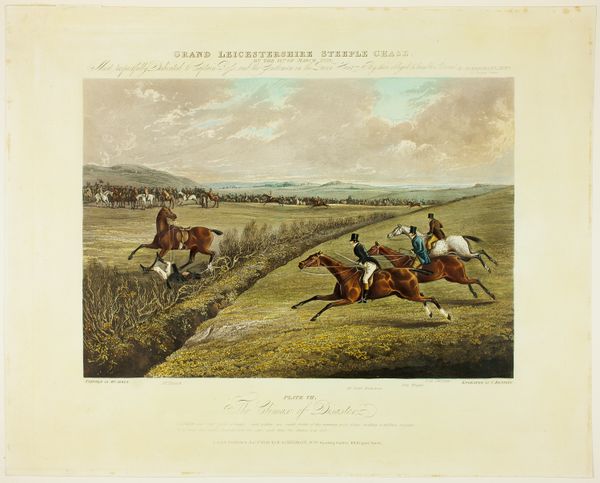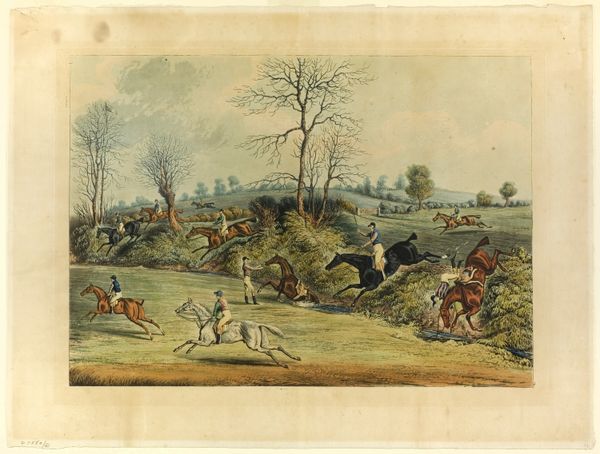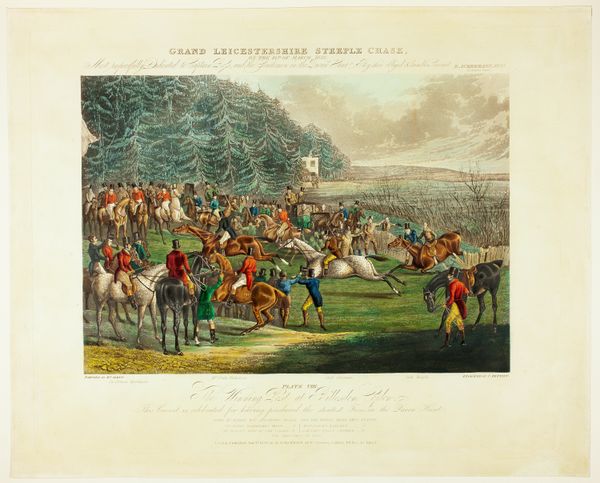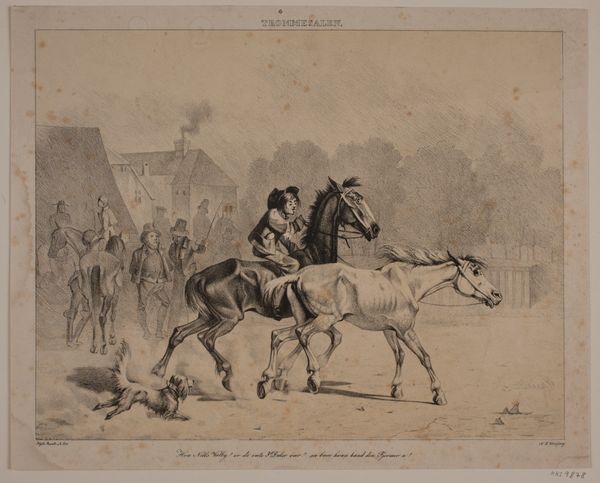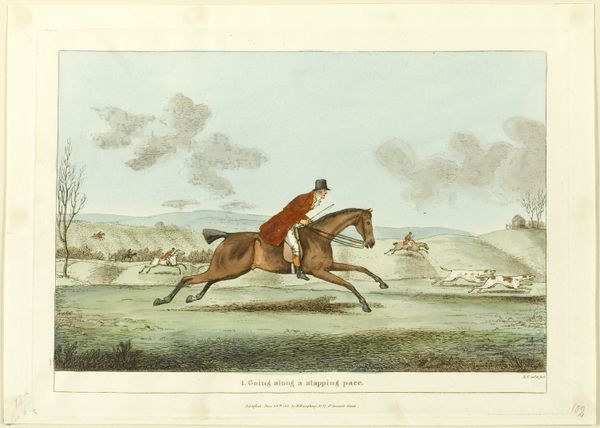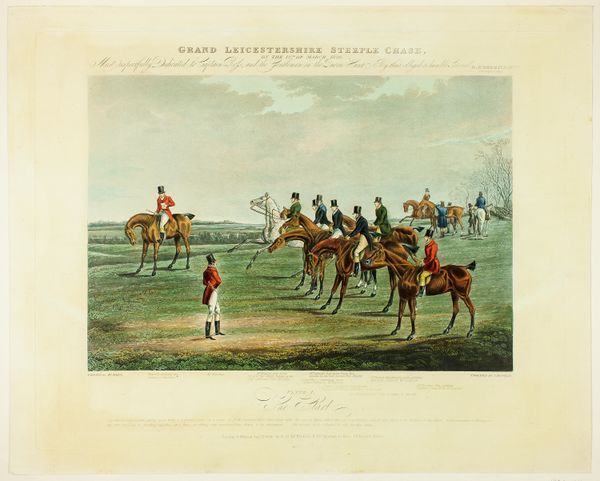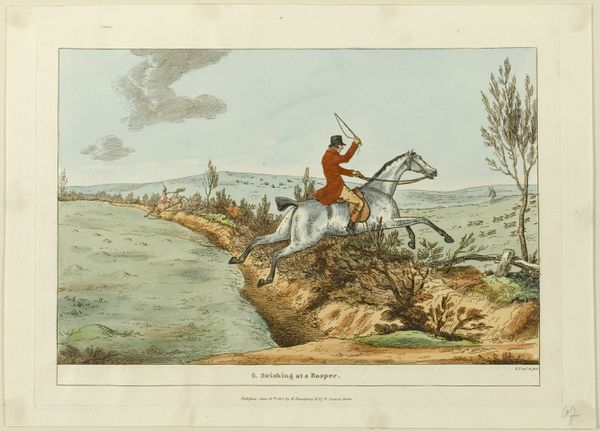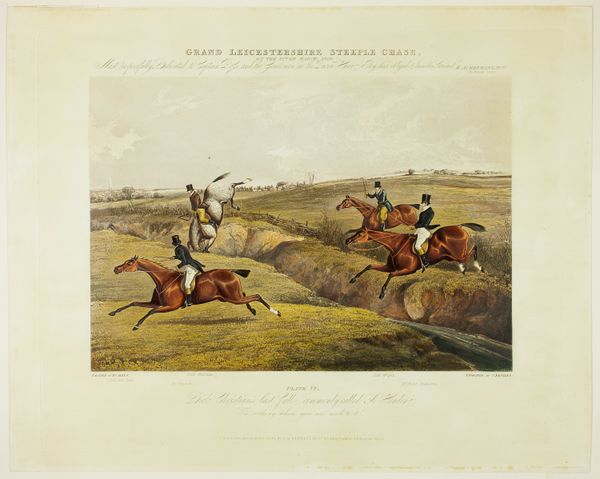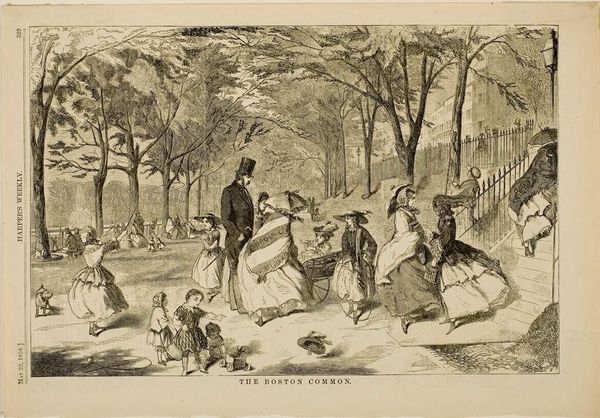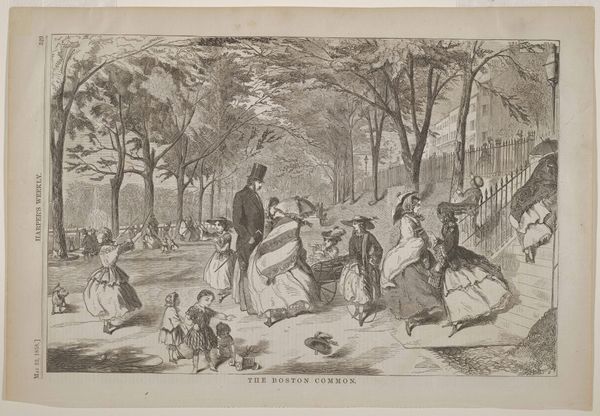
drawing, coloured-pencil, print, etching, paper
#
drawing
#
coloured-pencil
# print
#
etching
#
landscape
#
paper
#
coloured pencil
#
watercolour illustration
#
genre-painting
Copyright: Public Domain
Charles Hunt’s “Saint Albans Steeplechase” is an early nineteenth-century aquatint and etching print, a medium uniquely suited to mass production. Here, the artist employs a line engraving, using acid to bite lines into a metal plate, combined with an aquatint, a tonal process creating subtle gradations through powdered resin, and then printed in color. Together, these techniques allowed for detailed images that could be reproduced in relatively large quantities and in color – all without needing to rely on hand-painting each individual print. The print process not only allowed Hunt to capture the thrill of the steeplechase, but it made images accessible to a wider audience. In doing so, it democratized art appreciation, and, in some ways, commodified the aesthetic experience. Considering the labor involved, from the engravers, printers, and publishers, the “Saint Albans Steeplechase” exemplifies the intersection of art, craft, and commerce in an era defined by industrialization and burgeoning consumer culture. Recognizing the social context of its making, and mode of production, is key to understanding its full significance today.
Comments
No comments
Be the first to comment and join the conversation on the ultimate creative platform.
